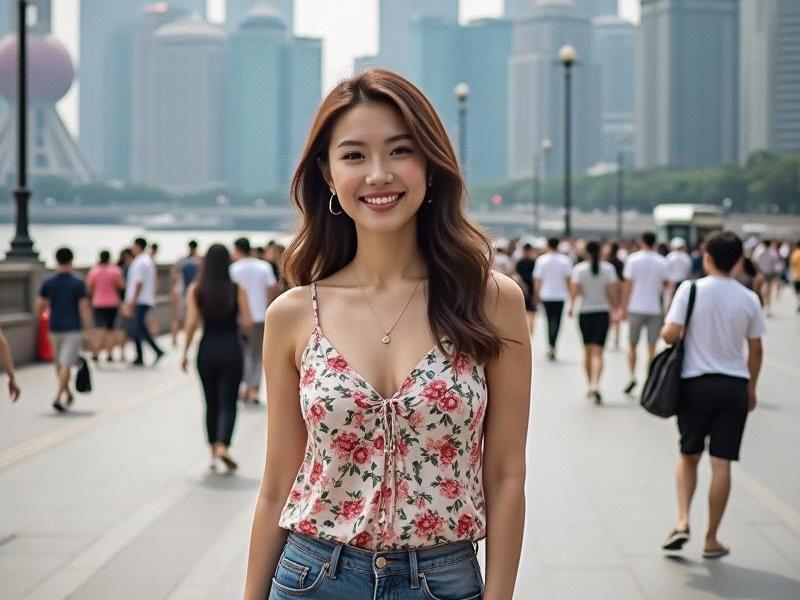This 2,500-word feature explores how Shanghai has become China's beauty capital through interviews with 12 local women, industry experts, and historical analysis of how the city's unique blend of Eastern and Western influences created distinctive beauty standards.

[The Shanghai Look]
At 8:15 AM in Xintiandi's most exclusive salon, 28-year-old finance executive Li Wenjing receives her weekly keratin treatment while discussing French skincare techniques with a stylist trained in Paris. This scene encapsulates modern Shanghai beauty culture - where traditional Chinese aesthetics seamlessly blend with global influences to crteeawhat industry insiders call "The Shanghai Look."
[Historical Roots]
• 1920s: Shanghai emerged as China's first beauty capital with qipao styles
• 1980s: First international cosmetic brands entered through Shanghai
• 2000s: Local brands began combining TCM with Western formulations
• 2020s: "Smart beauty" technologies revolutionized routines
[Market Overview]
2024 Shanghai Beauty Statistics:
• $3.2 billion annual spending on cosmetics (18% national total)
• 47% of women use hybrid Eastern-Western beauty routines
• 62 new beauty tech startups launched in 2023
• 28% higher spending per capita than Beijing
[The Modern Shanghai Woman]
爱上海最新论坛
Key characteristics:
✓ Fluent in blending traditional and contemporary styles
✓ Early adopters of beauty technology
✓ View skincare as self-care ritual rather than vanity
✓ Prefer "natural enhancement" over dramatic transformations
[Beauty Tech Innovation]
Shanghai-led developments:
• AI skin diagnostics in 89% of high-end salons
• Custom 3D-printed makeup appliances
• Smart mirrors with augmented reality try-ons
• Blockchain-based product authentication
[Case Study: The Perfect Face]
Shanghai's ideal incorporates:
• Porcelain skin tone (traditional)
上海龙凤419 • Defined cheekbones (Western influence)
• "Phoenix eye" shape (cultural heritage)
• Healthy glow (modern wellness trend)
[Industry Leaders]
Notable Shanghai-based brands:
• Herborist (TCM-meets-biotech skincare)
• Chando (luxury makeup for Asian skin)
• Pechoin (88-year-old rejuvenated brand)
• HomeFacialPro (direct-to-consumer phenomenon)
[Cultural Significance]
Beauty represents:
▶ Shanghai's historical cosmopolitanism
▶ China's economic confidence
▶ Female empowerment movements
▶ Technological advancement
上海私人品茶
[Global Influence]
Shanghai trends now followed in:
• Seoul's Gangnam district
• Tokyo's Shibuya beauty labs
• Singapore's Orchard Road salons
• Parisian luxury brand HQs
[Future Projections]
2026 Trends Forecast:
• DNA-based personalized cosmetics
• Virtual beauty consultations via metaverse
• "Emotional beauty" mood-responsive products
• Sustainable packaging mandates
[Conclusion]
As Shanghai continues its ascent as a global city, its distinctive beauty culture serves as both mirror and catalyst - reflecting the sophisticated synthesis of Chinese traditions with international influences while shaping new standards for urban femininity worldwide. The Shanghai woman's face has become the face of modern China itself - confident, technologically savvy, and perfectly balanced between East and West.